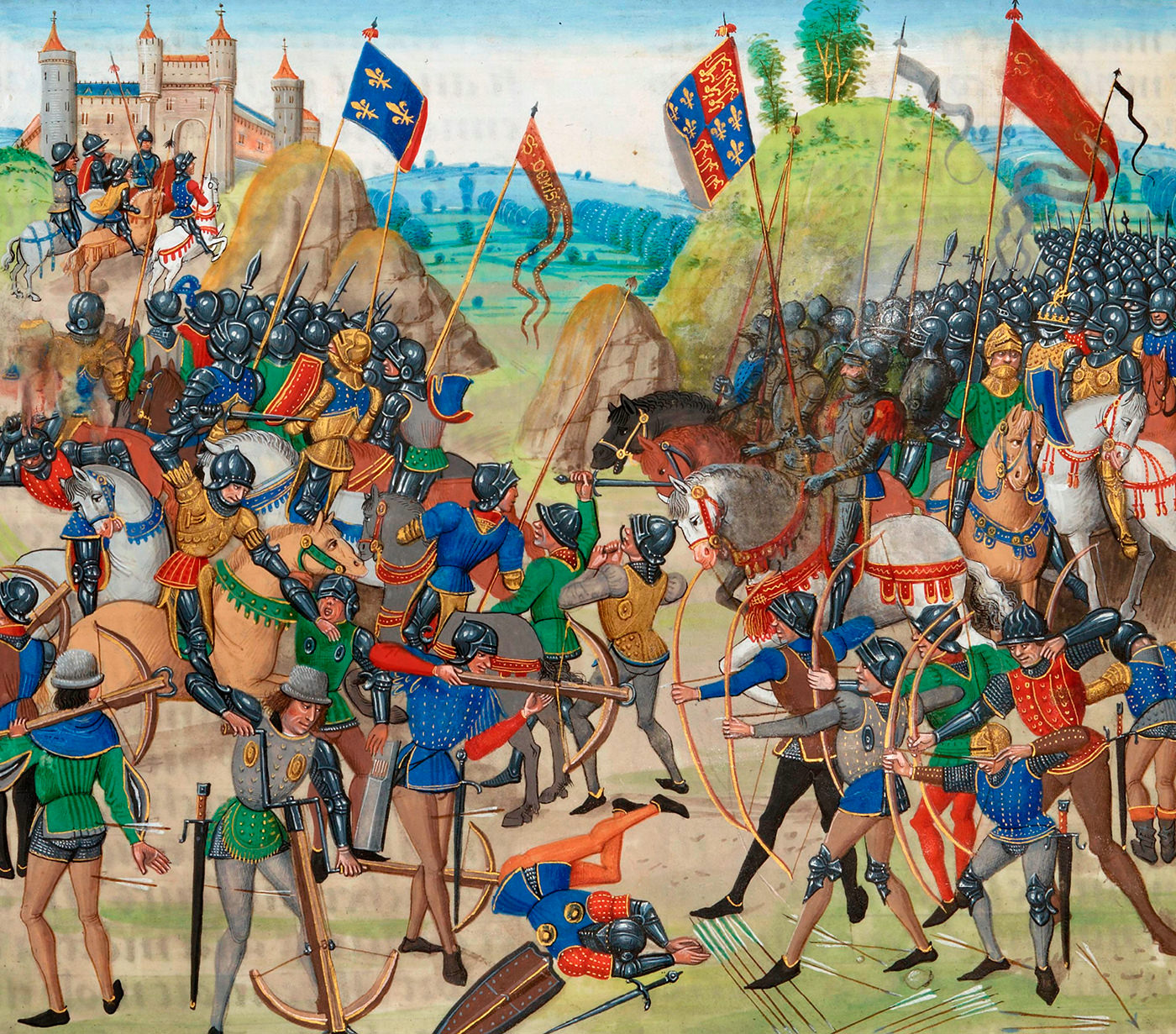Tackley History Mysteries No. 10
Crecy Hill: Tackley’s French Connection?
Where does Crecy Hill get its name from? On the 1844 tithe map it was
called Grassy Hill, and is often now known as Greasy Hill. Both names are
good descriptions of the land: pasture and, in the winter, very muddy.
However, it is very unlikely that Crecy Hill is a modern corruption of
those descriptive names. It is much more likely that they are both
corruptions of an older name — and if this does refer to the Battle of Crécy
in 1346, is there a possible connection with Tackley that would explain
it?
There is such a connection, although it is fairly thin and
circumstantial. The link is John de Shareshull who was rector of Tackley
from 1329 to 1336 while he was a student at Oxford. After graduation he was
appointed precentor of Oxford Cathedral, a post he held until his death in
1374.
The precentor was responsible for the cathedral’s music. His career was
spent in the church, although it is possible that he was the same John
Shareshull who took part in the 1355–56 campaign during the Hundred Years’
War led by the Black Prince that culminated in the Battle of Poitiers.
During the 1340s and 50s he served as a judge on commission in various
assize courts, a position that he no doubt owed to his older brother Sir
William de Shareshull (c 1289–1370) who became one of Edward III’s most
important financial and judicial advisers and Chief Justice of the King’s
Bench from 1350–60.
William Shareshull held extensive estates in Staffordshire and Oxfordshire,
including the manors of Barton Odonis (now called Sesswell Barton and
previously Sharshull Barton) and Dornford, as well as one of the two manors
in Rousham. Their proximity to Woodstock, as well as his family links to
royal courtiers, no doubt led to his connection with the Black Prince,
Edward of Woodstock, the eldest son of Edward III who was born in the royal
palace there in 1330.
When the prince was made the first Duke of Cornwall in 1337, William
Shareshull was appointed to the council of the duchy and then became
guardian of the principality after Edward was made Prince of Wales in 1343.
The Hundred Years’ War had broken out in 1337, and there is no evidence that
William participated in the English invasion of France in July 1346 or that
he was at the Battle of Crécy on 16 August 1346, where the Black Prince
was one of the English commanders. But his presence there would not have
been out of place: he had raised money for the prince’s campaign, and as
chief baron of the prince’s exchequer he was the prince’s most important
financial official.
 Battle of Crécy from a 15th-century manuscript of Jean
Froissart’s Chronicles
Battle of Crécy from a 15th-century manuscript of Jean
Froissart’s Chronicles
There is therefore a connection between Crécy and Tackley via the
Shareshulls, but the direct link between the family and the village predates
the battle by at least ten years. However, Crecy Hill is only two miles from
Lower Dornford and is in direct line of sight from Rousham – two of
William’s properties – so memorialising his young patron’s great victory
would not be beyond the bounds of possibility.
The questions still remain. If Grassy Hill and Greasy Hill are corruptions
of an earlier name, what was that name? And if it was Crecy Hill, how did it
get the name?
Research and text: John Perkins.
Published: 2021
More Mysteries